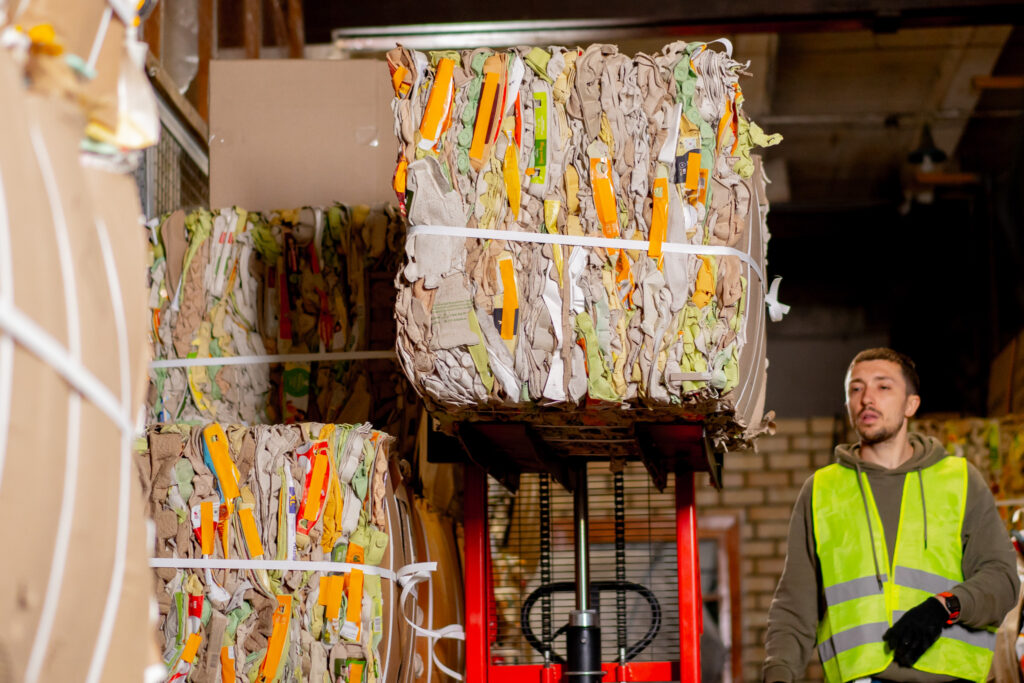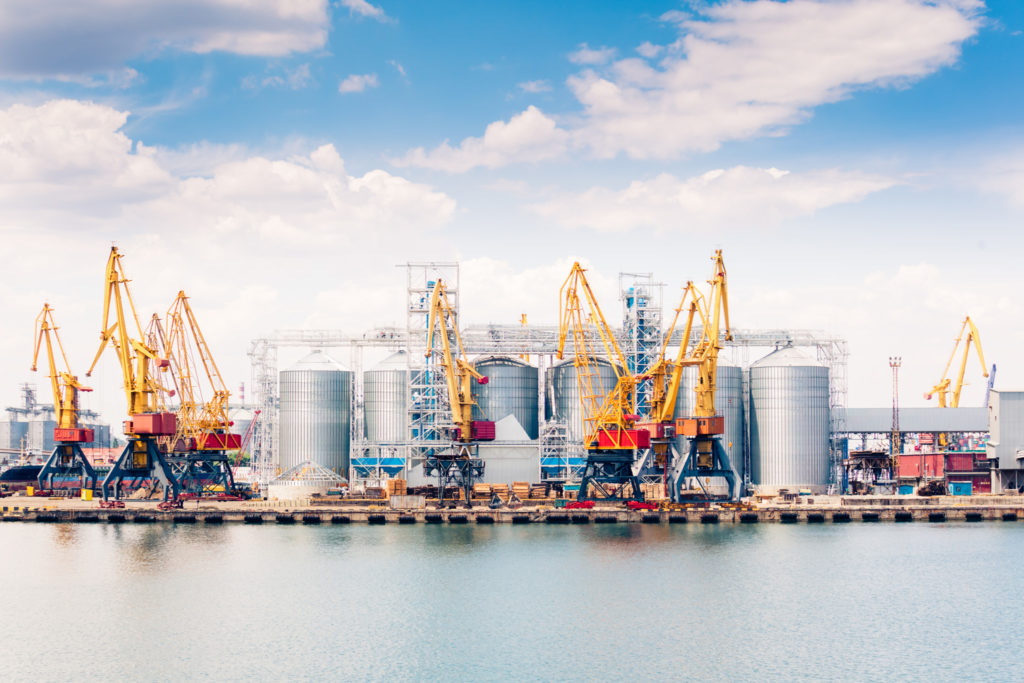As the supervisor or owner of a manufacturing or shipping facility, you likely notice the substantial quantities of plastic packaging waste you produce daily. You may feel concerned about the money going down the drain because of excessive packing materials. Plus, this waste never breaks down and contributes to global pollution.
At Encore Deliveries, we prioritize helping businesses reduce waste and improve the environment for our communities. Below, we will discuss the problem in-depth and explore what we know about plastic packaging and other shipping waste.
EarthDate contributors state that packaging materials comprise most household waste, meaning the garbage taken out of residential households primarily consists of packaging waste originating from:
- Shipping materials for protecting online shopping orders
- Plastic containers for food, beverages, and cosmetics
- Bottles, spray mechanisms, caps, and similar items for cleaning products
Many companies produce these items without using recycled materials. The convenience and variety afforded by online retailers ensures that e-commerce won’t stagnate. Therefore, plastic packaging will continue dominating landfills and infiltrating waterways unless suppliers and shippers take action.
Why Is Packaging Waste Overtaking the Planet?
The pandemic created a consistent rise in e-commerce. As more localities imposed restrictions, residents turned to digital means to meet their needs. Retailers enthusiastically designed systems to assist customers with contactless shopping and delivery, securing their continued success.
However, e-commerce has more specific ramifications that go beyond bad packaging. Examine traditional shipping methods and their impacts below.
Bracketing and Increased Return Rates
Bracketing, colloquially known as the “try before you buy” perk, refers to a strategy that allows a customer to experience a product before finalizing a purchase. This strategy comes in handy for discerning shoppers who cannot access the physical product in stores. They order multiple variations of the same product to see which fits best.
For example, you might buy numerous sizes or colours of the same t-shirt to find the best match. When you pick the winner, you return the others and finalize the purchase for the one you keep. While bracketing makes shopping more convenient for the buyer, it also means more damaged packaging is discarded.
Split Shipping Methods
Customers often purchase multiple items at a time to reduce shipping costs. Sometimes, the shipper will split the order into numerous packages rather than consolidating it into a single shipment. Split shipments might happen when:
- The seller or shipper aims to reduce delivery waits
- Some products are available before others
- The seller wants to avoid additional shipping costs due to larger packages
Splitting the shipments into numerous packages increases plastic packaging waste exponentially.
Packaging Materials Are Not Sustainably Designed
Since the materials most commonly used consist of plastics, they cannot break down if someone discards them outdoors. They also will not degrade in landfills. Most shipping materials fulfill a single purpose: to protect and secure items during an arduous shipping process.
They protect the item from bumps, temperature changes, and other complications that arise when a shipment is en route. Once delivered, the customer grabs their product and throws the packaging items away.
The Disadvantages of Plastic Packaging
An article published by the Supply Chain Solutions Center explores the disadvantages of plastic packaging and how it can affect us in the future. These include the following:
- Overall pollution: Eight million tons of plastic travel into the oceans annually. This contamination destroys the ecosystems that ensure and support human existence.
- Higher emissions: Plastic production creates more than plastic waste. It also produces greenhouse gasses that advance global warming.
- Increased waste: Most packaging materials end up in landfills, straining waste management systems globally.
- Wasted resources: Manufacturers use limited resources, like crude oil, to produce plastic materials. Creating new plastic from scratch also uses more energy than breaking down old plastics to produce new materials.
Prioritizing Packaging Sustainability: Strategies You Can Apply
How can you implement plastic sustainability and other eco-friendly practices into your logistics? See whether the following suggestions are feasible for your company.
#1 Don’t Overpack
You want all products to arrive at their destinations perfectly intact. Therefore, you might use as much material as possible to keep the products secure during shipment. However, this approach creates even more unnecessary waste.
While the products might arrive in ship shape, their highly packaged arrival may not necessarily please customers. Use appropriately sized boxes with wrapping and padding materials to provide a little extra cushioning.
#2 Use Fewer Plastics and More Biodegradable Options
Some items may not need plastic packaging at all. You can use biodegradable alternatives, such as:
- Recyclable packaging materials like cardboard and paper
- Compostable single-use envelopes made from cornstarch or sugar cane
- Biodegradable inserts made with safe, biodegradable fungus
Even if you can’t replace all plastic shipping materials, exchanging a portion still helps the environment.
#3 Simplify Returns With Reusable Packaging
Reconsider the packaging designs of products you allow customers to return. Many consumers receive items in single-use packages. If they are unsatisfied with their purchase, they must source other materials to return the products.
This creates frustration between the brand and the customer. It also may waste or damage products alongside the single-use packaging materials. Consider a reusable packaging design that allows customers to repackage the item before returning it.
#4 Opt for Recycled Materials
If you need to use plastics in your shipping materials, source recycled supplies. Look for package supply manufacturers that sort plastics from waste management before purifying and reusing them. This tactic reduces the amount of new plastic that inevitably ends up in the oceans and other waterways.
What’s in It for Your Company?
Sustainable business practices aren’t just for protecting the environment. They can also benefit you. A Business News Daily article by Andrew Martins explores how eco-friendly brands make themselves more attractive to customers.
Online queries for sustainable production practices have increased by 71%. Additionally, consumer satisfaction increases when a customer chooses an environmentally conscious retailer. You could attract more customers and profits to cover the costs of your sustainable practices.
Choose Encore Deliveries for More Sustainable Shipping Solutions
Encore Deliveries prioritizes sustainability. Use our services and updates to reduce plastic packaging and improve your environmental impact.
Frequently Asked Questions:
1: Why is packaging waste from e-commerce such a big problem?
- Answer: E-commerce often leads to excessive use of non-biodegradable packaging, increased return rates, and split shipments – all of which contribute to pollution and waste.
2: What are some simple ways to reduce packaging waste in my facility?
- Answer: Avoid overpacking, switch to biodegradable materials where possible, and consider reusable packaging options for returns.
3: Can going green with my packaging actually benefit my business?
- Answer: Yes! Consumers are increasingly drawn to eco-conscious brands, so sustainable practices can attract more customers and boost satisfaction.
4: What does the term ‘bracketing’ mean in e-commerce?
- Answer: Bracketing is when customers order multiple versions of a product with the intention of returning some, leading to more packaging waste.



 Who We Are
Who We Are
 Our Advantages
Our Advantages
 Case Study
Case Study





